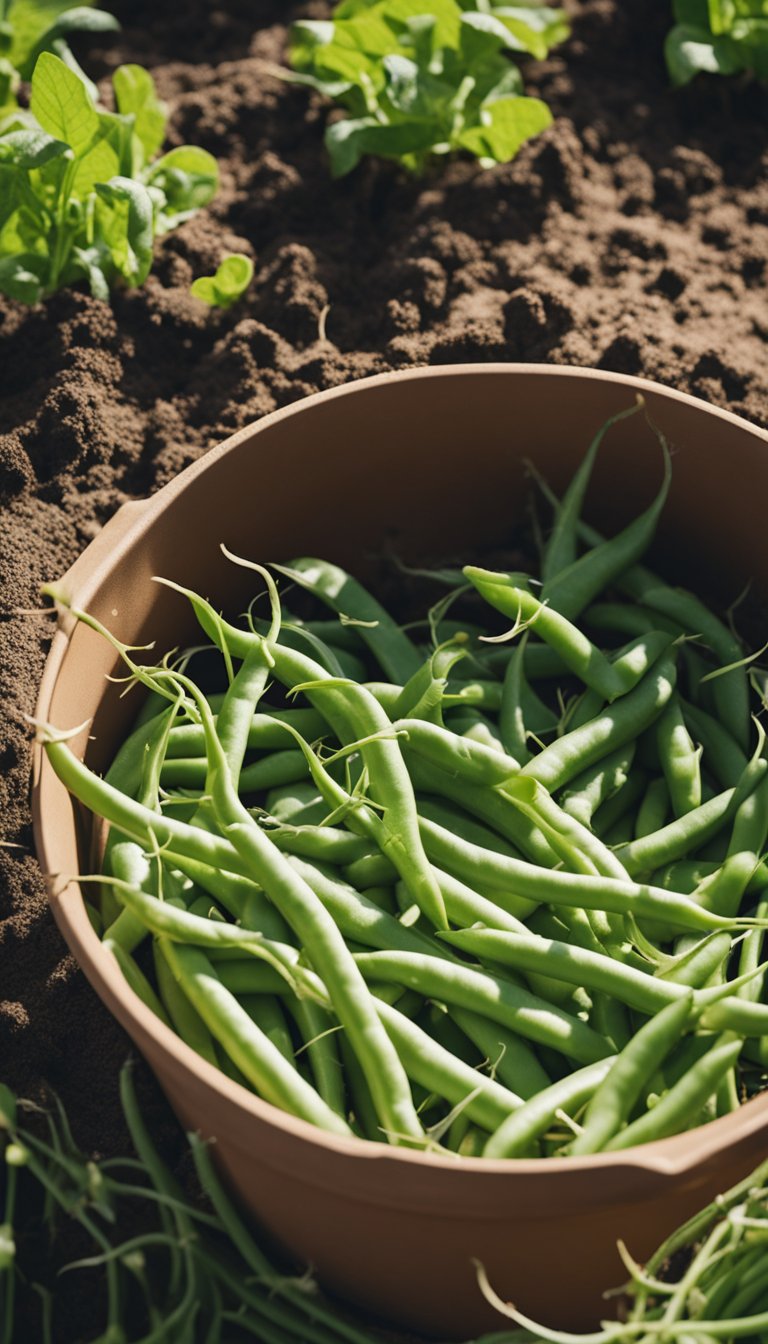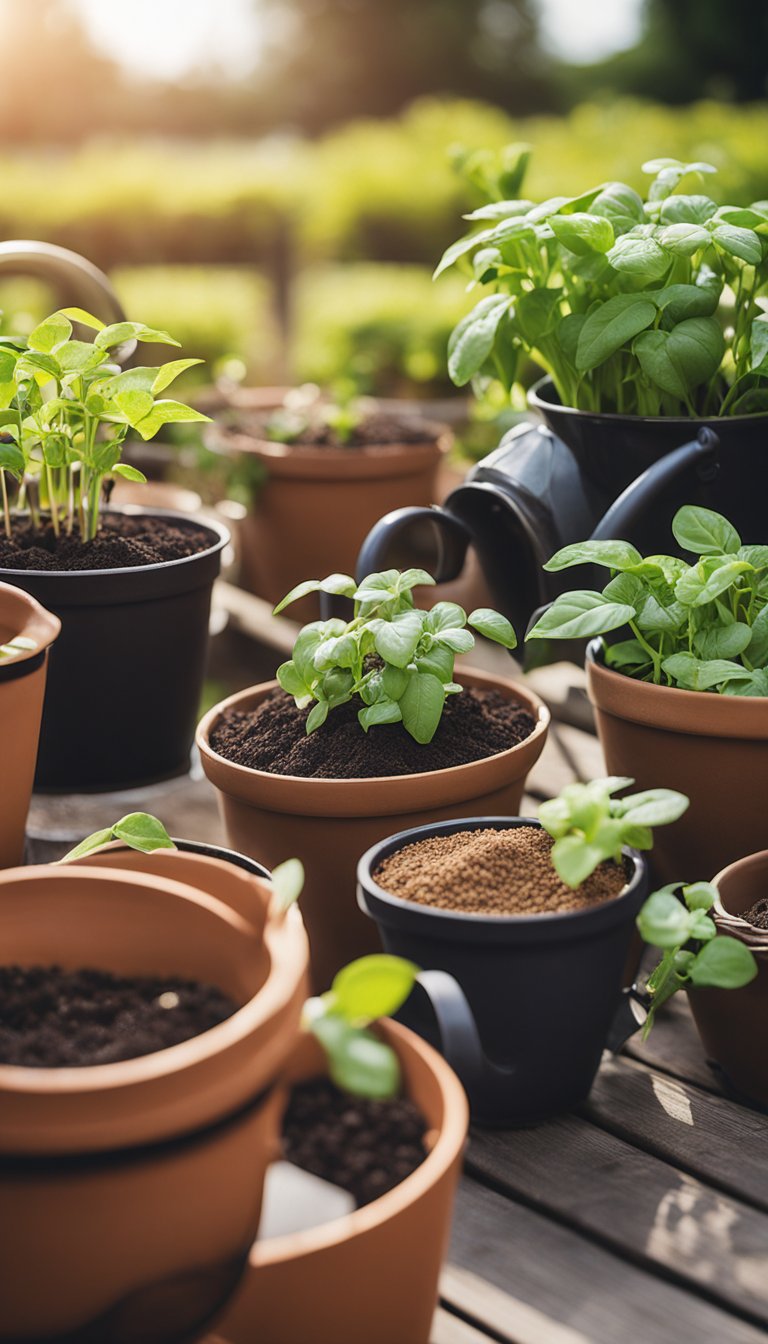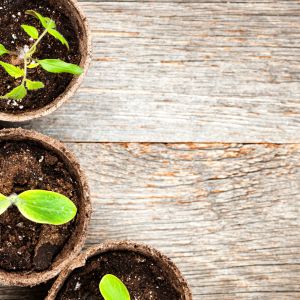Growing green beans in pots is an excellent way to enjoy fresh produce without the need for a large garden. Whether you’re a seasoned gardener or a beginner, growing green beans in pots is a simple and rewarding experience.
This post may contain affiliate links.
With the right tools and techniques, you can have a bountiful harvest of delicious green beans in no time.
To start, you’ll need to choose the right pot and soil. Green beans require well-draining soil with a pH between 6.0 and 7.5.
A pot that is at least 12 inches deep and wide is ideal for growing green beans. You can use a variety of pots, including plastic, ceramic, or terra cotta, as long as they have drainage holes at the bottom.
Additionally, you’ll need to choose the right type of green bean for your pot. Bush beans are a good choice for small pots, while pole beans require a taller support system.
Once you have your pot and soil ready, it’s time to plant your green beans. You’ll want to sow your seeds about 1-2 inches deep and 3-4 inches apart. If you’re planting pole beans, you’ll need to provide a trellis or support system for them to climb.
Water your green beans regularly, making sure the soil stays moist but not waterlogged. With proper care and attention, your green beans will grow quickly and provide you with a delicious and healthy harvest.
Choosing the Right Pot and Varieties
Selecting Containers
When it comes to growing green beans in pots, selecting the right container is crucial. You want to choose a pot that is large enough to accommodate the plant’s root system and allows for proper drainage. A pot that is too small can stunt the plant’s growth and cause it to wither away.
There are several types of containers you can use, including plastic pots, ceramic pots, and fabric grow bags. Fabric grow bags are an excellent choice for small spaces because they are lightweight, easy to move around, and allow for proper aeration.
They also come in a variety of sizes, so you can choose the perfect size for your green bean plant.
Green Bean Varieties
There are two main types of green beans: pole beans and bush beans. Pole beans grow on vines and require support, while bush beans grow in a compact bush and do not require support.
When growing green beans in pots, bush beans are the best choice because they are more compact and do not require a trellis or support system.
There are several varieties of bush beans to choose from, including Blue Lake, Tendergreen, and Provider. Blue Lake beans are a popular choice because they are easy to grow and produce a high yield.
Tendergreen beans are known for their tender, sweet flavor, and Provider beans are known for their disease resistance.
When selecting a green bean variety, it’s important to consider your growing conditions. Make sure the variety you choose is suitable for your climate and can tolerate full sun exposure.
By selecting the right pot and green bean variety, you can successfully grow green beans in pots and enjoy a bountiful harvest.

Preparing the Soil and Planting
Soil Composition
Before planting green beans in pots, it is important to ensure that the soil is of good quality. A well-draining potting mix is essential for the healthy growth of green beans.
You can prepare your own potting mix by mixing equal parts of perlite, vermiculite, and compost. Alternatively, you can purchase a pre-made potting mix from your local garden center. Make sure the potting mix is pasteurized to prevent the growth of harmful bacteria and fungi.
Planting Seeds
Once you have prepared the potting mix, it’s time to plant the seeds. Start by filling the pot with the potting mix, leaving about an inch of space at the top.
Make a small hole in the soil, about an inch deep, and place the seed in it. Cover the seed with soil and gently press down. Repeat this process for each seed, leaving about two to three inches of space between each seed.
After sowing the seeds, water the soil thoroughly, making sure the water reaches the bottom of the pot.
Place the pot in a warm, sunny location, and make sure the soil temperature remains between 60°F to 85°F for optimal germination. Keep the soil moist but not waterlogged, as overwatering can lead to root rot.
Caring for Green Beans in Pots
Growing green beans in pots is a great way to enjoy fresh produce without the need for a large garden. Once you have planted your green beans, it is important to care for them properly to ensure a healthy and bountiful harvest.
Watering and Fertilizing
Green beans need consistent moisture to grow well, so make sure to water them regularly. Avoid letting the soil dry out completely, but also make sure not to overwater, as this can lead to root rot. A good rule of thumb is to water when the top inch of soil feels dry to the touch.
In addition to water, green beans also need nitrogen to grow. Fertilize your plants with a vegetable fertilizer or manure every 3-4 weeks to keep them healthy and strong.

Managing Pests and Diseases
Green beans can be susceptible to pests and diseases, so it is important to keep an eye out for any signs of trouble. One common pest is aphids, which can be controlled with neem oil or by spraying the plants with a strong stream of water.
Bean leaf beetles and Mexican bean beetles can also be a problem, but can be controlled with insecticidal soap or neem oil.
To prevent diseases such as powdery mildew, make sure to provide good air circulation around your plants. Mulching around the base of the plants can also help retain moisture and prevent weeds.
Supporting and Training Green Beans
Green beans are climbers, and they need support to grow tall and strong. Providing support and training for your green beans is essential for a healthy harvest. Here are some tips to help you support and train your green beans in pots.
Using Trellises and Supports
Trellising is one of the most common ways to support green beans. You can use a trellis made of wood, bamboo, or metal. A trellis provides a structure for the beans to climb up and also helps keep them off the ground. This prevents the beans from getting damaged by pests and diseases.
You can also use stakes to support your green beans. Stakes are vertical poles that you can insert into the soil next to your plants. Tie the plants to the stakes with twine or string to keep them upright.
Another option is to use a teepee. A teepee is a structure made of several poles that are tied together at the top. Place the poles in a circle around your green bean plant and tie the vines to the poles with twine or string. This provides a sturdy structure for your beans to climb up.
You can also use tomato cages to support your green beans. Tomato cages are cylindrical wire structures that you can place around your plants. The beans will grow up through the cage, and the cage will provide support for the vines.
No matter what type of support you choose, make sure it is sturdy enough to hold the weight of the vines and beans.
As the beans grow, continue to tie them to the support structure to keep them growing up and not out. With the right support and training, your green beans will be healthy and productive.
Harvesting and Enjoying Your Beans
When and How to Harvest
Once your green bean plants have been growing for about 50-60 days, you should start to see bountiful pod production. This is the time to start harvesting your beans!
To harvest your green beans, simply pick the pods off the plant with your fingers. It is best to harvest your beans when they are young and tender, before the pods become tough and stringy.
You can tell if a bean is ready to be harvested by gently bending the pod. If it snaps easily, it is ready to be picked.
It is important to continue harvesting your beans regularly, about every 2-3 days, to encourage more pod production. If you leave the beans on the plant for too long, the plant will stop producing new pods.
Once you have harvested your green beans, you can enjoy them in a variety of ways. They can be eaten raw as a healthy snack, added to salads, or cooked in a variety of dishes.
To cook your green beans, simply boil them in salted water for 3-5 minutes, until they are tender but still crisp. You can also sauté them with garlic and olive oil for a delicious side dish.
Frequently Asked Questions
What are the best bean varieties for container gardening?
There are several bean varieties that are perfect for container gardening. The best ones are bush beans, which are compact and don’t need support.
Some popular bush bean varieties include Blue Lake, Provider, and Rocdor. However, you can also grow pole beans in containers if you provide them with a trellis or support structure.
Can you grow green beans indoors using pots?
Yes, you can definitely grow green beans indoors using pots. However, you need to make sure the plants get enough sunlight and proper ventilation. You can use grow lights to supplement natural light if necessary. Also, make sure to choose a container that is large enough for the plants to grow.
What steps are involved in growing green beans from seeds in containers?
To grow green beans from seeds in containers, you need to fill the container with potting soil and plant the seeds according to the instructions on the packet.
Keep the soil moist and provide the plants with plenty of sunlight. Once the plants have sprouted, you can thin them out to ensure they have enough space to grow. Also, make sure to fertilize the plants regularly.
Do bush beans or pole beans work better for container planting?
Bush beans generally work better for container planting because they are more compact and don’t require support. However, you can also grow pole beans in containers if you provide them with a trellis or support structure.
How much sunlight do container-grown green beans need?
Container-grown green beans need at least 6 hours of sunlight per day. If you are growing them indoors, you may need to supplement natural light with grow lights.
What are some tips for beginners starting to grow green beans in pots?
If you’re a beginner starting to grow green beans in pots, here are some tips to keep in mind:
- Choose a container that is at least 12 inches deep and wide enough to accommodate the plants.
- Use high-quality potting soil and fertilize the plants regularly.
- Water the plants regularly, but don’t overwater them.
- Make sure the plants get enough sunlight and proper ventilation.
- If you’re growing pole beans, provide them with a trellis or support structure.
- Finally, be patient! It may take a few weeks for the plants to sprout and start producing beans.
Follow my gardening board on Pinterest.



